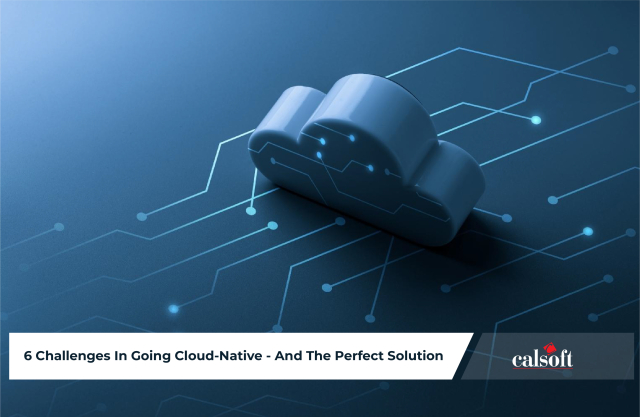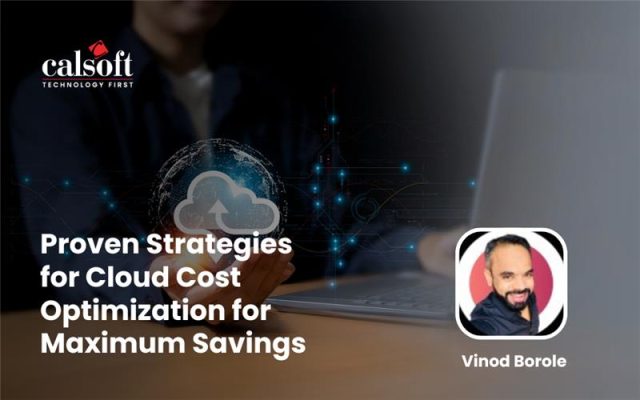The cloud-native landscape has caused a major shift in a number of ways. This modern outlook on software development has allowed many businesses to take advantage of the scalability and extensibility that cloud computing offers. According to a report by Gartner, an estimated 85% of organizations would be implementing cloud-native approaches to application development by 2025!
Naturally, opting for cloud-first would undoubtedly transform the way the traditional development methods and tools are used for building robust applications.
But this popular approach does have a certain number of pros and cons. Before we dig into them, let’s first understand what the term cloud-native means.
What is cloud-native?
While traditional development practices, methods, and approaches are suitable for on-premise architectures, cloud-native incorporates various tools and technologies to build applications for the cloud. Using cloud-native, developers can build software applications that are flexible, highly scalable, and robust.
As per the Cloud-Native Computing Foundation, CNCF, cloud-native technologies enable the building of powerful scalable applications and loosely coupled systems that are resilient and manageable. Through its components like containers, microservices, Kubernetes, and APIs, to name a few, developers can make frequent dynamic changes to their applications with minimal effort.
Transitioning to cloud-native for application development can get quite complicated, especially with the growing number of requirements and brand-new components. Any failure in consciously putting together several components of the application architecture would cause huge operational costs.
Here are six of the most common challenges businesses face in their cloud adoption journey.
Challenges in Going Cloud-native
#1. Persistent data handling and storage
Handling and isolating persistent data isn’t every cloud platform’s cup of tea. Replicating the exact data store while transitioning to the cloud can get complex, as many assumptions need to be made at the logical level.
Cloud-native workflows store data externally, as opposed to traditional applications, where data is always stored internally. Hence, developers need to redefine their data storage and access strategies which require a ton of additional effort in the planning stage.
#2. Cloud vendor lock-in
Being over-dependent on a particular technology or a service provider is a major drawback for organizations. They often get stuck using only a specific set of tools and approaches, leading to inefficient use of the vast cloud-native landscape.
To build scalable applications and maximize cloud benefits, developers need to avoid lock-in risk by planning well ahead. Otherwise, switching vendors at a later stage results in high operational costs and steep overhead.
#3. Security concerns
From compliance issues to privacy concerns and data breaches, security teams face many hurdles while their applications adopt cloud-native architecture. Adhering to the constantly changing cloud resources only adds to this complexity and gets quite difficult to maintain even security. Since there are numerous parts within a cloud application, security needs to be of top priority for each of them or there could be a high probability of getting compromised. Also, there is a high risk of misconfiguration, where an asset is not configured correctly which is a serious mishap and causes data leaks.
#4. Lack of technical expertise
With technology advancing regularly, finding skilled IT cloud talent has proven to be a difficult task for most organizations. Due to this shortage, companies have slowed down the process of moving to the cloud. Also, companies noticed a significant skills gap within their hired talent, moving them to train their talent on emerging cloud technologies regularly.
#5. Use of outdated technologies
While modernizing legacy software applications, it is crucial to keep up with the latest developments in cloud technologies and find their cloud-native equivalents. This requires a tremendous amount of effort from developers, since the use of outdated technologies results in low-quality, inefficient applications and slows down the business. Also, legacy applications using outdated technologies are often an additional burden for companies, as the cost to maintain them is often high. Therefore, the use of modern technologies and tools is crucial to staying relevant and ahead of the competition.
#6. Complex cloud-native concepts
As cloud-native computing is on the rise, so too is the complexity of understanding it entirely. Often, key decision-makers or stakeholders, with not much IT expertise, are overwhelmed by their choices when choosing what’s best for their software. Understanding the core concepts of cloud-native like microservices, serverless or containers can often get quite challenging without the help of a cloud expert.
To benefit from the cloud, every challenge needs to be addressed to take advantage of the cloud-native architecture’s incredible benefits. The aforementioned ones are some of the predictable challenges that occur during the migration of legacy applications or in building new ones. There could be a lot more issues in security, data, or technology-based concerns that would prevail on the journey to the cloud.
The Solution?
A partner with well-known expertise in the cloud could prove to be an important asset in building scalable cloud-ready applications and decreasing the time to market. At Calsoft, we help businesses take advantage of the cloud-native architecture to build fast, robust, scalable applications or migrate the legacy ones to the cloud-native landscape.
Want your applications to leverage the cloud-native advantage? Get in touch with us to create robust applications and get your legacy applications optimized by bringing them to speed using the power of the cloud.







